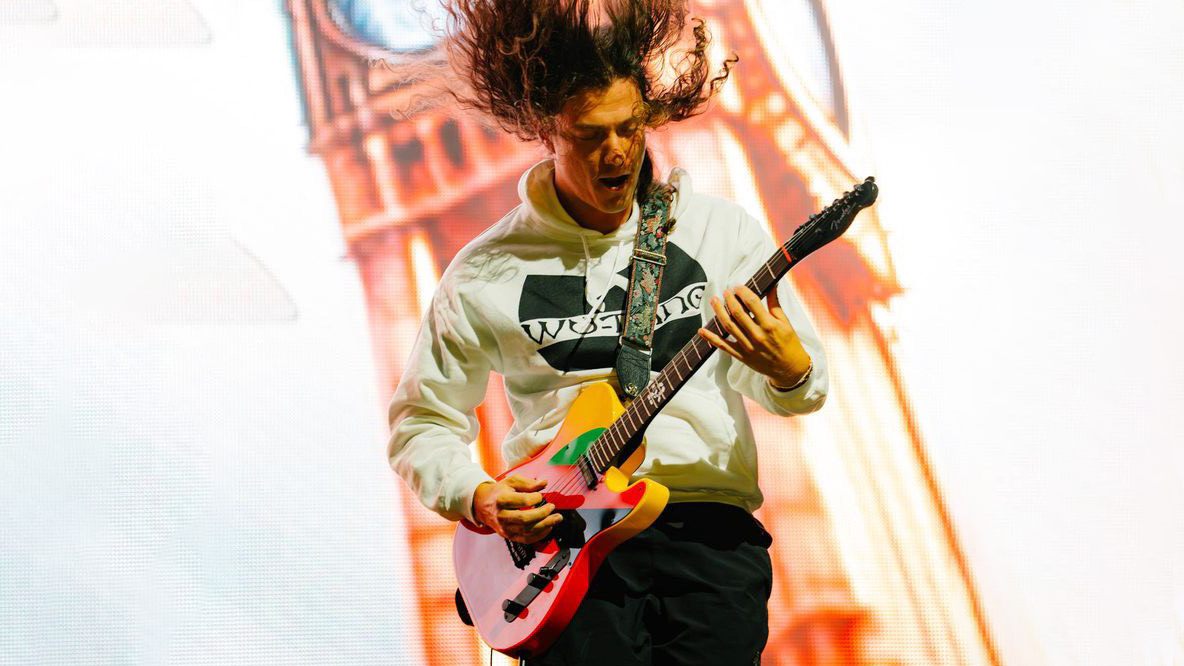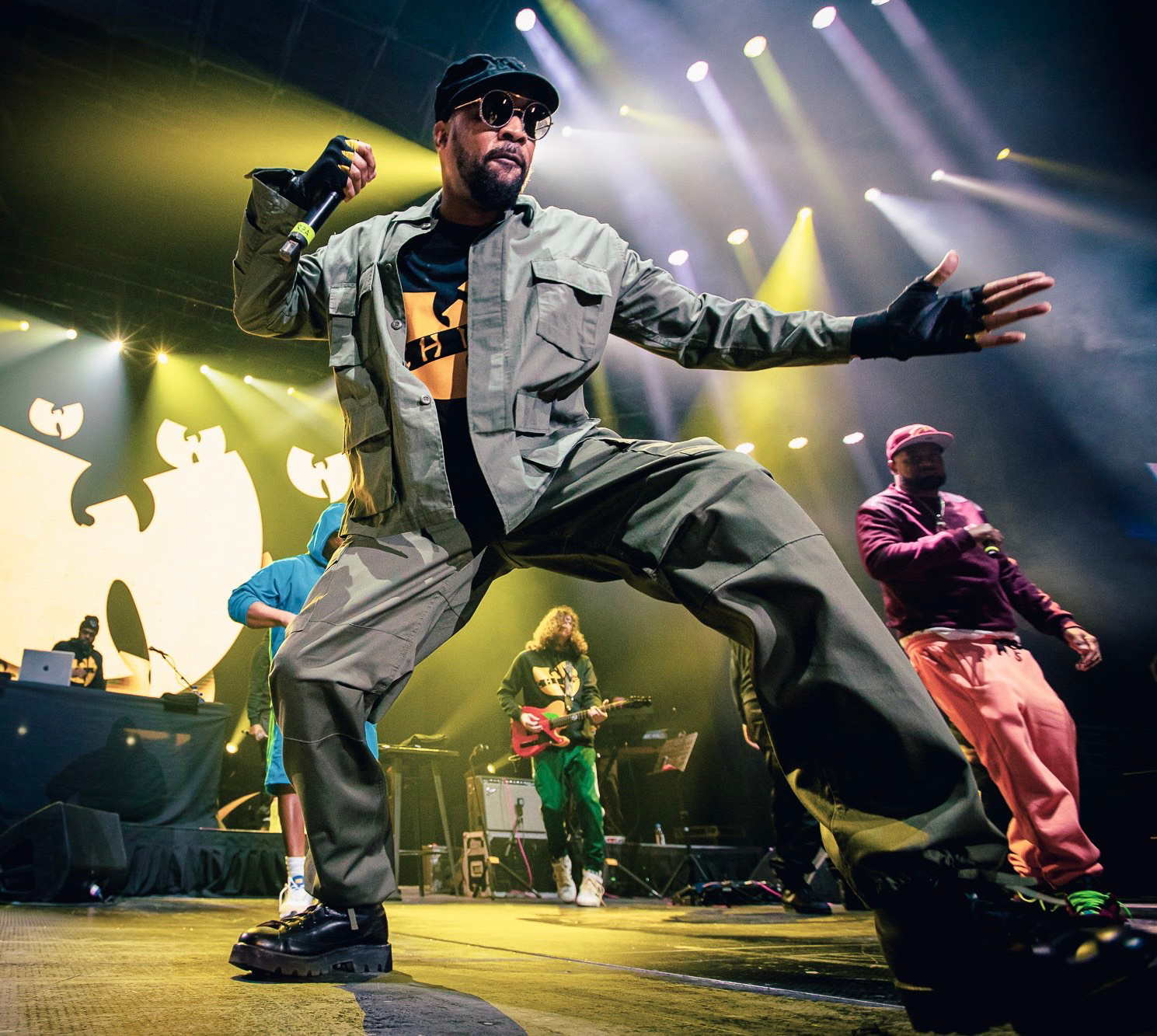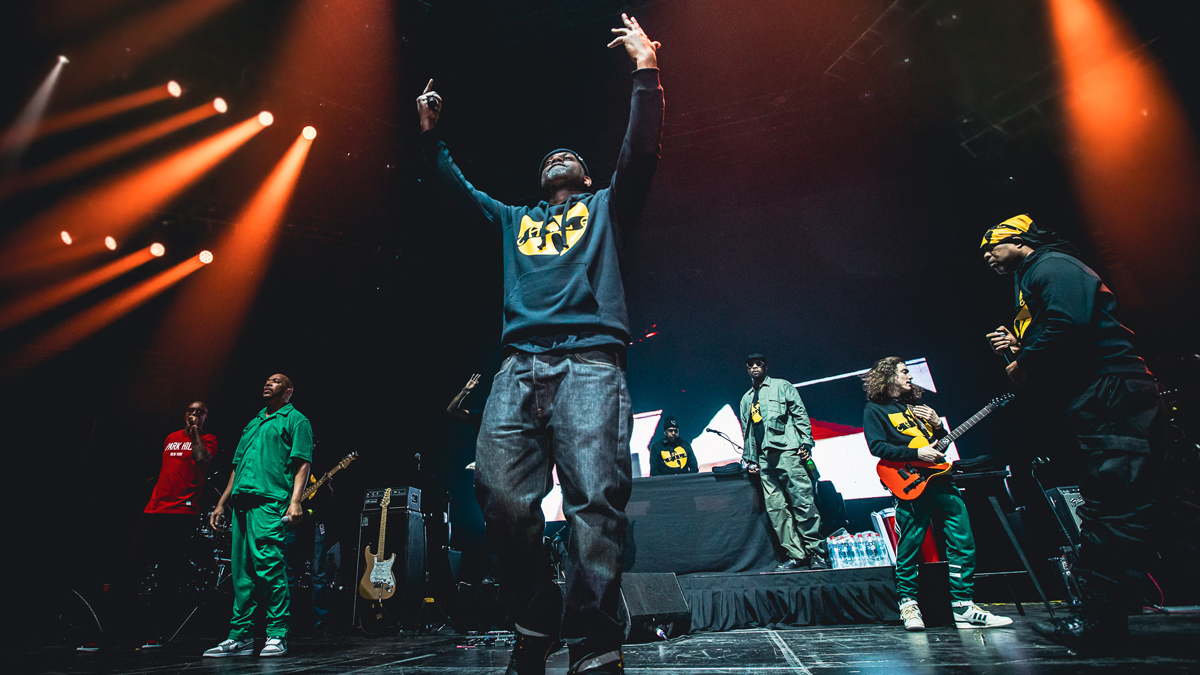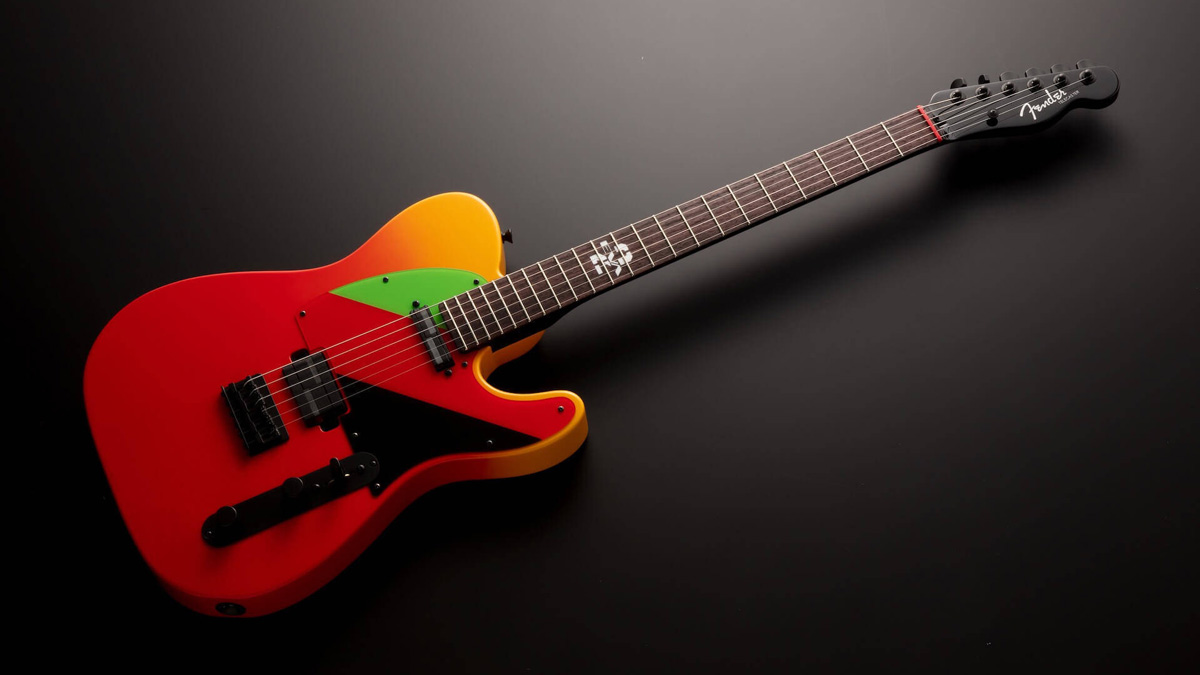“It’s so rare, I never played it and kept it in the case. But when we discovered we were going out with Wu-Tang, I was like, ‘I’m bringing that guitar!’” Meet the metalhead who joined Wu-Tang Clan – and brought one of Fender’s most elusive Teles with him
As a young shredder, Cody Nierstedt was never into hip-hop, but now he listens to nothing else. He reveals how he landed the gig of the lifetime, his strategy for incorporating pinch harmonics and sweep picking into the hip-hop legends’ shows, and why people don't believe his Telecaster is real

Guitar isn't the first sound that comes to mind when the average fan thinks of hip-hop outfit Wu-Tang Clan.
As for Wu-Tang's current touring guitarist, Cody Nierstedt, it goes even deeper than that – hip-hop wasn't even on his radar as a young player.
"It's interesting," he says, "I didn't grow up listening to it. But the funny thing is that even though I was very into metal, the first actual CD I owned was in third grade when I bought a G-Unit album from this kid for three dollars [laughs]."
"I listened to that album forever," he continues. "But I kept getting heavier and heavier, getting into bands like Slayer and then post-hardcore. But now, dude, I love hip-hop; even though metal was the coolest thing ever to me as a teenager, now I can't stop listening to all the old hip-hop stuff."
As for how he picked up the guitar, it originated with keyboards… and a Nintendo classic.
"I remember my brother getting a Sharper Image keyboard," he says. "I'd sit there and try and figure out the presets, and then I got into Legend of Zelda on Nintendo and wanted to learn all those songs [laughs].”
"But when I was around 11, we moved from Brooklyn [New York] to New Jersey, and this kid in school talked about how he could play guitar. I was like, 'Whoa, that's sick, you play guitar?' And then I asked my mom, who hooked me up with lessons, an orange [Ibanez] RG30FM, and I immediately said, 'Yup, this is the only thing I care about.'"
Get The Pick Newsletter
All the latest guitar news, interviews, lessons, reviews, deals and more, direct to your inbox!
From the jump, Nierstedt found himself knee-deep in metal and rock, learning Electric Funeral by Black Sabbath before moving on to Neil Young's Rockin' in the Free World and Ozzy Osbourne’s Crazy Train. So how did a heavy metal kid from New York City and New Jersey end up on stage with hip-hop icons?

"I went to school for classical and jazz guitar," he says. "I kept trying to suppress that heavier side of me, you know? And when I graduated, I moved back to Jersey and worked in a music store. One day, the store owner had a party and invited me over, and I ended up talking with his son for about an hour. We hit it off immediately, started a progressive band called Shot, and it turns out that our bass player's dad was RZA."
As for how he ended up hitting the road with RZA and Wu-Tang Clan, Nierstedt says, "Like a year-and-a-half later, RZA approached us saying, 'Hey, I've got a TV show on Hulu [Wu-Tang: An American Saga], and I'd love for you guys to do the score.”
Songs like Ice Cream and Killa Bees are dope – they allow me to use pinch harmonics and even add a little solo while doing minor harmonic stuff and diminished sweeps
"We did all three seasons," he recalls. "And I thought that would be it. But then, RZA said, 'Do you guys want to come to Hong Kong and play with Wu-Tang?' I was like, 'Hell, yeah!' then we were asked to go to South America, I said, ‘Hell, yeah!’ and here we are today, wrapping up the last leg of the tour."
Now fully embracing his heaviness and sharing the stage with a hip-hop group that has long erred toward the heavy metal side of a genre that often disassociates itself with such things, Nierstedt has found his niche.
Still, Wu-Tang's original recordings are far from guitar-forward, leaving Nierstedt with a challenge.
"It's more about enhancing the beats," he says. "I'll double some parts, give a wider field, and make it harder. But honestly, as I was learning the beats, I felt like Wu-Tang has a lot of heavy and even classical vibes. So, being able to make something on guitar by being within the loop with the MC has dialed me the fuck in."

"Songs like Ice Cream and Killa Bees are dope," he continues. "They allow me to use pinch harmonics and even add a little solo while doing minor harmonic stuff and diminished sweeps. It's been a learning experience and a true test, but I love the energy, even if it's just looping the main part repeatedly."
Nierstedt's swagger and knowledge have brought a new dynamic range to Wu-Tang's tried-and-true classics. And he's brought some killer gear to the party.

"I'm using a Fender [Evangelion] Asuka Tele," he beams. "It's super-rare and based on this anime series I love called Neon Genesis Evangelion. I've got a bunch of tattoos from that series, so when Fender announced this guitar during Covid, I knew I had to have it."
"I called my Fender rep because it instantly sold out," he says. "And he said, 'Dude, you have a better chance of winning the lottery.' But about a year later, he called, saying, 'One popped up, I can get it, but you need to buy it right now,' and I was like, 'Fuck, yeah.' But it's so rare, so I never played it and kept it in the case.”
"People always wanna take pics," he laughs. “They didn't think it wasn’t real or thought it was just a meme, and I'd be like, 'Okay, yeah, it’s real… but don't drop it.' But when we discovered we were going out with Wu-Tang, I was like, 'I'm bringing that fucking guitar.' I've got like 45 guitars, but for this gig, the Asuka Tele was the move."
A post shared by Cody Nierstedt (@cody_nierstedt)
A photo posted by on
As for the effects that he injects into Wu-Tang's already eclectic mix: "I'm using a Neural DSP [Quad Cortex], which is fucking saving my life, dude. I've got it set up like a pedalboard, with each button as a different effect. But I love the Strymon Mobius [Multi Modulation], which is like the ultimate sleeper pedal, and I've got my Fractal expression pedal, too."
With all-over-the-map influences and the knowhow and will to genre-hop, Cody Nierstedt is shining a light on a corner of the guitar community often left in darkness.
"The more I've delved into this, the more I realize how much guitar is in hip-hop," he says. "Like many people, I thought the guitar was unsung in that music, but there's so much you can do with it. If you can grab onto the melodies or emulate different vocal tones, you can fill this music out with different chords."
He concludes, "I know a lot of hip-hop has digital samples, but there's a lot of guitar pentatonics, so adding electric guitar – especially distorted guitar – to Wu-Tang's live sound has filled it out. It's a very different animal, and there's more beef to it. You can take hip-hop further with a bit of grit, distortion, and tone, probably because, at least with Wu-Tang, it was almost there already. It can be the simplest thing I do, but it can make a huge difference."
Andrew Daly is an iced-coffee-addicted, oddball Telecaster-playing, alfredo pasta-loving journalist from Long Island, NY, who, in addition to being a contributing writer for Guitar World, scribes for Bass Player, Guitar Player, Guitarist, and MusicRadar. Andrew has interviewed favorites like Ace Frehley, Johnny Marr, Vito Bratta, Bruce Kulick, Joe Perry, Brad Whitford, Tom Morello, Rich Robinson, and Paul Stanley, while his all-time favorite (rhythm player), Keith Richards, continues to elude him.



![[from left] George Harrison with his Gretsch Country Gentleman, Norman Harris of Norman's Rare Guitars holds a gold-top Les Paul, John Fogerty with his legendary 1969 Rickenbacker](https://cdn.mos.cms.futurecdn.net/TuH3nuhn9etqjdn5sy4ntW.jpg)







